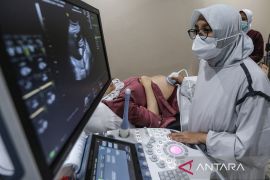VALENCIA, Spain, Mar. 24, (ANTARA/PRNewswire-AsiaNet) --
Protelos(R) (strontium ranelate) has significantly greater bone-forming activity than the commonly prescribed bisphosphonate, alendronate, according to results of the largest-ever biopsy study in post-menopausal women presented today at the European Congress on Osteoporosis and Osteoarthritis (ECCEO011-IOF) in Valencia.[i] Through its unique dual impact on both bone formation and resorption, Protelos substantially reduces fracture risk, the primary goal of osteoporosis treatment.
Bone biopsy is the gold standard technique used to examine the effect of osteoporosis treatments on bone. Bone biopsies involve taking a cylindrical sample of real bone from the upper part of the pelvis called the iliac crest. Biopsies allow the identification of non-mineralized (osteoid tissue) and mineralized subparts of the bone matrix and can be used to measure bone formation rates and other parameters. Bone formation is measured by examining mineralizing surface, the proportion of bone surface on which new mineralized bone is being deposited.
In this international, double blind study of 268 women, Protelos has a significantly greater effect on mineralizing surface compared to alendronate. After six months, mineralizing surface, expressed as a percentage of bone surface (the study's primary endpoint) was 2.94% in Protelos patients compared to 0.20% in patients receiving alendronate (p<0.001). This superior effect on bone formation was further amplified after 12 months of treatment. Protelos also significantly increased both the bone formation rate and the mineral apposition rate compared to alendronate over six and 12 months of treatment. The superior bone-forming efficacy of Protelos is linked to its innovative dual mechanism of action which rebalances bone turnover in favour of the formation of newer and stronger bone. This is not the case with bisphosphonates as they have been shown to actually suppress the bone forming-surface.[ii]
"The results of the study show that Protelos preserves a higher bone forming activity compared with alendronate," notes study investigator Professor Roland Chapurlat from the Hôpital Edouard Herriot, Service de Rhumatologie et Pathologie Osseuse, Lyon, France.
"The bone-forming activity seen here can be attributed to strontium ranelate's unique mechanism of action which, unlike bisphosphonates that block bone resorption and formation, combines the dual effects of increasing or maintaining bone formation and decreasing bone resorption," points out study investigator Professor PG Ste- Marie from the Centre Hospitalier de l'Université de Montréal, Canada.
This new trial conducted in 268 post-menopausal women with osteoporosis is the largest biopsy study ever. It sets a new standard in the assessment of the effects of different osteoporosis treatments on bone. It is also the second head to head study in which Protelos demonstrates superiority versus alendronate. In the previous trial, which used a non-invasive technique (High Resolution peripheral Quantitative Computerized Tomography), Protelos was shown to be more effective than alendronate on bone microarchitecture at both cortical and trabecular level.[iii],[iv]
Over the course of both studies, the occurrence of adverse events was similar for each treatment group.
Anti-fracture efficacy sustained over 10 years
Better efficacy on bone formation and bone quality are the key determinants for Protelos and explain its well demonstrated efficacy against vertebral, non vertebral and hip fractures. [v, vi, vii] It is also the key determinant explaining why Protelos is the unique treatment which has recently been shown to have sustained anti-fracture efficacy over 10 years, making it a first choice of treatment for postmenopausal osteoporotic women.[viii]
Notes to editors
Osteoporosis - a common, debilitating disease
Osteoporosis is a chronic condition due to decreased bone mass, leading to reduced bone strength and increased fracture risk. Because women are particularly susceptible to bone loss after the menopause, by far the most common form is postmenopausal osteoporosis. The estimated lifetime risk of wrist, vertebral or hip fracture in Caucasian women over 50 is 45%. The annual incidence rate of osteoporotic fractures in women is greater than the combined incidence rates of heart attack, stroke and breast cancer.[iv] Postmenopausal osteoporosis has a huge impact on healthcare budgets, which are already expected to double for osteoporosis by the year 2050.
Protelos is marketed by independent French pharmaceutical company, Servier. It is licensed for the treatment of postmenopausal osteoporosis to reduce the risk of vertebral and hip fractures. It is currently registered worldwide and marketed in 72 countries.
Protelos is also sold under the trade names Protos(R), Osseor(R), Bivalos(R) and Protaxos(R).
References
---------------------------------
[i] Chavassieux P, Brixen K, Zerbini C, et al. Bone formation is significantly greater in women on strontium ranelate than in those on alendronate after 6 and 12 months of treatment: histomorphometric analysis from a large randomized controlled trial. Osteoporos Int. 2011. Abstract. Presented at the ECCEO Congress, Valencia, Spain, March 2011.
[ii] Ott SM. Long-term safety of bisphosphonates. J Clin Endocrinol Metab 2005; 90:1897-9.
[iii] Rizzoli R, Laroche M, Krieg MA, et al. Beneficial Strontium ranelate and alendronate have differing effects on distal tibia bone microstructure in women with osteoporosis. Rheumatol Int. 2010; 30:1341-1348.
[iv] Rizzoli R, Felsenberg D, Laroche M, et al. Beneficial effects of strontium ranelate compared to alendronate on bone microstucture - A 2 year study. Osteoporos Int. 2010; 21(Suppl 1): S28-S29 (Abstract P107).
[v] Meunier PJ, Roux C, Seeman E, et al.The effects of strontium ranelate on the risk of non vertebral fracture in women with postmenopausal osteoporosis.N Engl J Med. 2004;350:459-468.
[vi] Reginster JY, Seeman E, De Vernejoul MC, et al. Strontium ranelate reduces the risk of non vertebral fractures in postmenopausal women with osteoporosis: TROPOS study. J Clin Endocrinol Metab. 2005;90(5):2816-2822.
[vii] Reginster JY, Felsenberg D, et al. Effect of long term strontium ranelate treatment on the risk of non vertebral and vertebral fractures in postmenopausal osteoporosis. Arthritis&Rhum. 2008;58(6):1687-1695.
[viii] Reginster JY, Kaufman JM, Goemaere S et al. Long-term treatment of postmenopausal osteoporotic women with strontium ranelate: results at 10 years. Osteoporos Int 2010; 21(suppl 5): S665-S666 (Abstract OC4).
SOURCE: Servier
Reporter: Adityawarman
Editor: PR Wire
Copyright © ANTARA 2011











